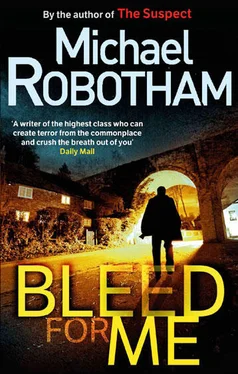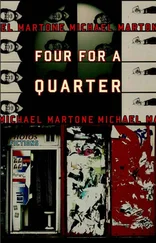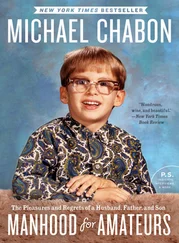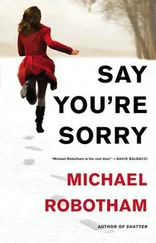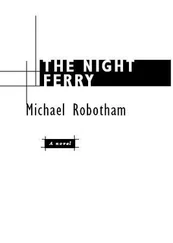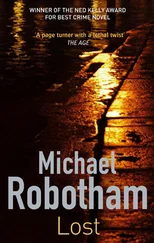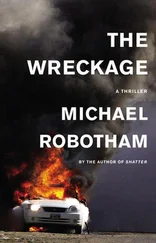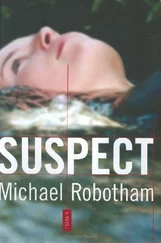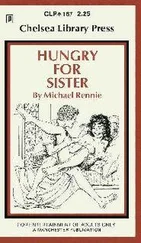Nearby, a forensic technician is crouching on the front path taking photographs. Dressed in blue plastic overalls, a hood and matching boot covers, he looks like an extra in a science-fiction movie.
Positioning a plastic evidence tag, he raises the camera to his eye. Shoots. Stands. When he turns I recognise him. Dr Louis Preston - a Home Office pathologist with a Brummie accent that makes him sound eternally miserable.
‘I hear they woke you, Ronnie.’
‘I’m a light sleeper,’ she replies.
‘Were you with anyone in particular?’
‘My hot-water bottle.’
‘Now there’s a waste.’ The pathologist glances at me and nods. ‘Professor, long time no see.’
‘I would have waited.’
‘I get that a lot.’
Preston is famous for terrorising his pathology students. According to one apocryphal story, he once told a group of trainees that two things were required to conduct an autopsy. The first was no sense of fear. At this point he stuck his finger into a dead man’s anus, pulled it out and sniffed it. Then he invited each student to follow his lead and they all complied.
‘The second thing you need is an acute sense of observation,’ he told them. ‘How many of you noticed that I stuck my middle finger into this man’s anus, but sniffed my index finger?’
Urban myth? Compelling hearsay? Both probably. Anybody who slices open dead people for a living has to maintain a sense of humour. Either that or you go mad.
Turning back to the van, he collects a tripod.
‘I never thought I’d see Ray Hegarty like this. I thought he was bloody indestructible.’
‘You were friends?’
Preston shrugs. ‘Wouldn’t go that far. Mutual respect.’
‘How did he die?’
‘Somebody hit him from behind and then severed his carotid artery.’ The pathologist runs a finger across his throat. ‘You’re looking for something like a razor or a Stanley knife. It’s not in the bedroom.’
Cray helps him move a silver case. ‘When can we come inside?’
‘Find some overalls. Stay on the duck boards and don’t touch anything.’
The two-storey semi has wisteria twisting and climbing across the front façade. No longer in leaf, the grey trunk looks gnarled and ancient, slowly strangling the building. There are stacks of old roofing tiles beside the garage doors.
Two things stand out about the house. It’s the sort of place that should have had a long sweeping drive - all the proportions suggest it. Secondly, it’s partially hidden from the road by a high wall covered in ivy. Tall trees are visible beyond the slate roof and chimneys. The curtains downstairs are open. Anyone approaching would have seen the lights on.
‘Was the door locked or unlocked?’
‘Open,’ says Cray. ‘Sienna ran. She didn’t bother pulling it closed.’
Stepping on to the first of a dozen duckboards, I follow her through the front door and along a passage.
‘ Tread lightly, she is near
Under the snow,
Speak gently, she can hear
The daisies grow. ’
Cray looks at me. ‘Who wrote that?’
‘Oscar Wilde.’
‘Some of those Micks could write.’
Orange fluorescent evidence markers are spaced intermittently on the stairs, distinguishing blood spots. A camera flashes upstairs, sending a pulse of light through the railings.
I turn and study the front door. No burglar alarm. Basic locks. For a security consultant, Ray Hegarty didn’t take many personal precautions.
‘Who lives next door?’
‘An old bloke, a widower.’
‘Did he hear anything?’
‘I don’t think he’s heard anything since the Coronation.’
‘Any sign of forced entry?’
‘No.’
‘Who had keys?’
‘Just the family members. There’s the other daughter, Zoe. She’s at university in Leeds. She’s driving down now with her boyfriend. And there’s Lance, who’s twenty-two. He works for a motorcycle mechanic in Bristol. Rents his own place.’
The sitting room and dining room are tastefully furnished. Neat. Clean. There are so many things that could be disturbed - plants in pots, photographs in frames, books on shelves, cushions on the sofas - but everything seems in place.
The kitchen is tidy. A single plate rests in the sink, with a cutting board covered in breadcrumbs. Helen made a sandwich for lunch or a snack to take to work. She left a note on the fridge for Sienna telling her to microwave a lasagne for dinner.
Through the kitchen there is an extension that was probably a sunroom until it was turned into a bedroom. Refitted after Zoe’s attack, it has a single bed, a desk, closet and chintz curtains, as well as a ramp leading down to the garden. The en suite bathroom has a large shower and handrails. On the dresser there is a picture of Zoe playing netball, balanced on one leg as she passes the ball.
Walking back along the hallway, I notice the door beneath the stairs is ajar. Easing it open with my shoe, I see an overnight bag on the floor. Ray Hegarty’s overcoat hangs on a wooden peg. He came home, hung up his coat and tossed down his bag. Then what?
Something drew him upstairs. A sound. A voice.
Cray goes ahead of me, stepping over evidence markers as she climbs each step without touching the banister. The main bedroom is straight ahead. Two doors on the left lead to a bathroom and second bedroom. Sienna’s room is off to the right. Ray Hegarty lies face down on a rug beside her bed with his arms outstretched, head to one side, eyes open. Blood has soaked through the rug and run along cracks in the floorboards. His business shirt is stained by bloody handprints. Small hands.
Sienna’s room is a mess with her clothes spilling from drawers and draped over the end of her bed, which is unmade. Her duvet is bunched against the wall and a hair-straightening iron peeks from beneath her pillow.
I notice a shoebox, which has been customised with photographs clipped from magazines. Someone has pulled it from beneath the bed and opened the lid to reveal a collection of bandages, plasters, needles and thread. It is Sienna’s cutting box and also her sewing kit.
The untidiness of the room could be teenage-induced. I have one of those at home - messy, sullen and self-absorbed - but this looks more like a quick ransacking. A search.
‘Is anything missing?’ I ask.
Cray answers. ‘Nothing obvious. We won’t know until we interview the family.’
‘Where’s Helen?’
‘At the hospital with Sienna.’
Crouching beside the body, I notice blood splatters, some large and others barely visible, sprayed as high as the ceiling. A hockey stick lies near his right hand. Lacquered to a shine, it has a towelling grip in school colours.
I squat motionless in the centre of the room, trying to get a sense of the events. Ray Hegarty was hit from behind and fell forward. There are no signs of a struggle, no defence wounds or bruises or broken furniture.
Turning my head, I notice an oval-shaped mirror on a stand, which is reflecting a white square of light on to the bed, highlighting the small blue flowers stitched into the sheets.
I look at myself reflected in the mirror and can also see the door behind me. Stepping over the body, I partially close the door and stand behind it. Glancing towards the mirror, I can see Cray reflected in the open doorway.
Her eyes meet mine.
‘What is it?’
‘This is where they stood. The mirror told them when Ray Hegarty was in the doorway.’
‘But there’s hardly any room.’
‘The door was half-closed.’
‘Someone small.’
‘Maybe.’
Almost immediately I remember Sienna’s face bleached by the beam of the torch. There was something in her eyes . . . a terrible knowledge.
Читать дальше
